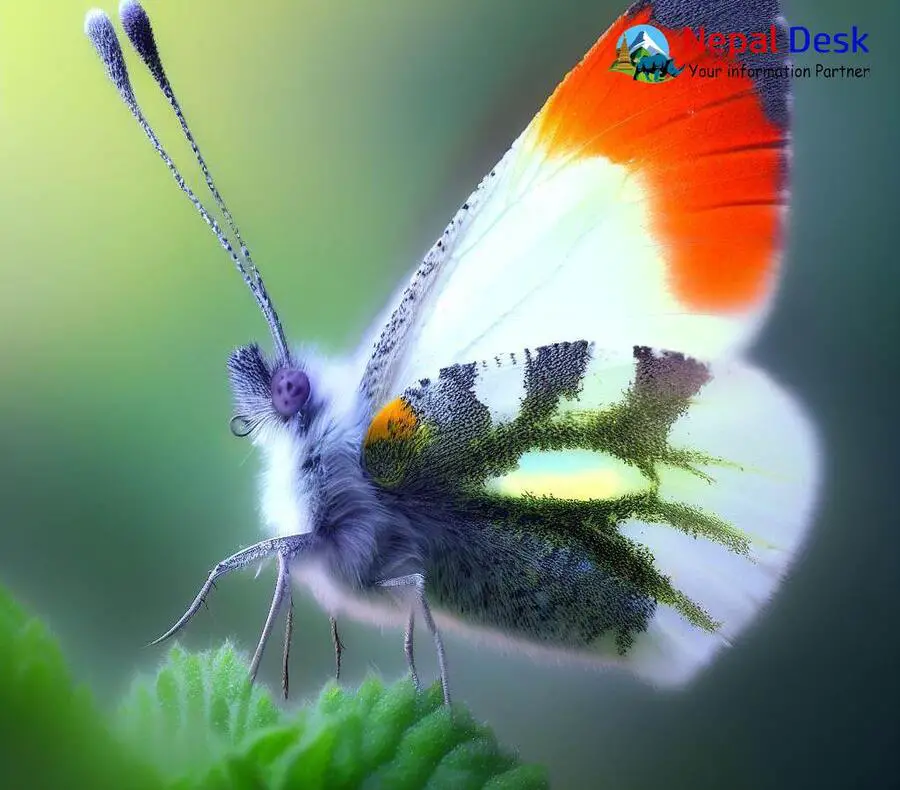
The Large Orange Tip Butterfly, scientifically known as Hebomoia glaucippe, and also known as the Orange-Tip or Large Chequered White, is a species of butterfly that belongs to the Pieridae family. The butterfly is found in many regions of the world, including Asia, Africa, and Europe. It is a stunning species that catches the eye with its vibrant colors and unique patterns. As one of the most widespread butterflies throughout Asia, those who appreciate the beauty of these delicate creatures are likely to come across them in their natural habitat.
Habitat of The Large Orange Tip Butterfly
The Large Orange Tip Butterfly is found in a diverse range of habitats throughout Asia, from low-elevation plains to high-altitude mountainous regions. In Nepal, these butterflies can often be spotted in subtropical forests and grasslands. They prefer areas with abundant sunlight and flowers for nectar sources.
Flight Behaviour and Pattern of The Large Orange Tip Butterfly
When it comes to flight, the Large Orange Tip Butterfly is known for its swift and erratic movements that make them difficult to predict. They can zip around at high speeds from one plant to another but will sometimes pause gracefully on leaves or flowers as they bask in the sun or sip on nectar.
Life Cycle of The Large Orange Tip Butterfly
The life cycle of a Large Orange Tip Butterfly consists of four main stages: egg, larva (caterpillar), pupa (chrysalis), and adult. The female butterfly will lay her eggs on host plants within their habitat – most commonly mustard plants that belong to the Brassicaceae family. Once the eggs hatch into caterpillars, they spend their days eating leaves until they grow to full size. The caterpillar will then seek out a sturdy structure to attach itself to for the pupation process. Eventually, the adult butterfly emerges from the chrysalis, dries its wings, and takes flight, starting the cycle anew.
Features and Behaviour: Male and Female Large Orange Tip Butterfly
Males of the Large Orange Tip Butterfly are slightly smaller than females and feature a brighter hue of orange on their wings. The upper side of their forewings has a striking black border with white spots. Males are territorial creatures, often perching on leaves or branches and vigorously defending their territory from any intruders or opponents.
Females, on the other hand, have a paler shade of orange on their wings. The black border on their forewings appears more diffuse with fewer white spots. Females tend to have a smaller territory compared to males and are usually seen flitting between flowers in search of nectar or laying eggs.
Distribution and Spotting of The Large Orange Tip Butterfly in Nepal
In Nepal, Large Orange Tip Butterflies can be found throughout the country – from lowland regions to elevations as high as 2,000 meters. They are generally more prominent during spring and summer, when flowers bloom and temperatures rise. Keep an eye out for these striking butterflies at national parks, botanical gardens, or along well-trodden nature trails – anywhere you're likely to find an abundance of nectar-rich flowers.
Understanding the habits and characteristics of the Large Orange Tip Butterfly offers a glimpse into the incredible world of these intriguing insects. So next time you're exploring the beautiful landscapes of Nepal, be sure to watch for these vibrant butterflies dancing through the air – they're a sight you won't want to miss!
